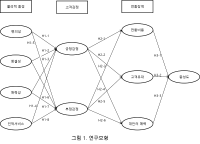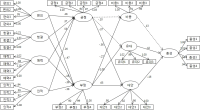
Purpose The purpose of this study was to conduct a typological classification of female college students in sport studies regarding perceived career barriers. Methods Q-methodology was used to identify female college students’ viewpoints on carrier barriers. The Q sample was distilled from 76 statements (64 from literature reviews and 12 in-depth interviews) to 25 statement after conducting literature review, in-depth interviews and surveys with open-ended questions. The P sample for this study was 30 students around Seoul and PQmethod software was used for data analysis. Results Three distinct views were extracted: First type of ‘career opaque’, revealed that students have failed to find their own aptitude and interest. Second type of ‘sexual discrimination-male centered’, implied students’ concerns about discriminating factors in relation to marriage and pregnancy for the job they desire. Third type of ‘Insufficient experience and qualification’, indicates students perceive their lack of experience or qualification required for their career. Conclusions The identification of these three viewpoints could provide insights that can be used to design more segmented and detailed career policies for female college students in sport studies.


Purpose The purpose of this study is to classify the subjectivity of re-socialization barriers among retired footballers. Methods Q methodology was conducted to identify constraint factors contributing to social adjustment and reemployment perceived by 28 P-samples. Results Re-socialization barriers were classified as ‘Type I: Internal-constraint’, ‘Type II: External-constraint’, ‘Type III: Internal-conflict’, and ‘Type IV: External-conflict’. These types provided a variety of academic and practical discussions, depending on where the barriers are taken from (internal and external) and what depends on them (objective conditions and subjective ideas). Conclusions This study focused on the subjective structure of retired footballers and complemented traditional methodology focusing on hypothesis testing. Therefore, each type found in this study provides useful information not only in follow-up study on retired athletes, but also in policy-making decision such as support projects.



The purpose of this study was to investigate the relationship between physical environment, customers' emotions, switching barriers and loyalty among water ski resort users in Gyeonggi-do and Gangwon-do province. Convenience sampling method was used, 277 of the questionnaires were selected as the ultimately valid sample. Data were analysed by SPSSWIN 18.0 and AMOS 18.0 program using frequency analysis, reliability analysis, correlation analysis, confirmatory Factor Analysis(CFA) structural equation model(SEM). The research findings are as follows. First, relations between physical environment and customers' emotions, attractiveness, cleanliness, convenience and human service had a significant positively impact on positive emotional response. convenience, attractiveness, human service, and cleanliness had a significant negatively impact on negative emotional response. Second, relations between customers' emotions and switching Barriers, positive emotional response did not have a significant impact on switching cost and interpersonal relationship, but positive emotional response had a significant impact on attractiveness of alternatives. negative emotional response had a significant impact on switching cost, interpersonal relationship and attractiveness of alternatives Third, relations between switching barriers and loyalty, switching cost did not have a significant impact on loyalty. but interpersonal relationship and attractiveness of alternatives had a significant impact on loyalty.


PURPOSE This study aimed to explore the re-socialization process of college soccer players who rejoin college soccer clubs after dropping out. METHODS A case study approach was employed, and participants were selected using the snowball sampling method. Data were collected through in-depth interviews, participant observation, and literature reviews. The authenticity of the data was validated through triangulation, member checking, and peer debriefing. All research procedures were conducted following approval from the institutional review board. RESULTS The study revealed several key findings. First, participants faced numerous challenges during the re-socialization process into sports, including interpersonal, academic, and emotional difficulties. Second, distinctive features of the re-socialization process emerged, including the determination and effort required for adapting to university life, support from socialization agents within the university, and rapid re-socialization following dropout. Third, experiences within collegiate soccer clubs indicated low barriers to entry for former athletes, academic success through complementary relationships, a hierarchical culture familiar to student-athletes, and enhanced satisfaction in interpersonal relationships and a sense of belonging. CONCLUSIONS This study underscores the importance of institutional support that enables college athletes to participate in sports clubs, facilitating the successful re-socialization of athletes who have dropped out.
PURPOSE This study developed and applied a group counseling program for university athletes’ career development. METHODS Following Kim’s (2002) procedure for developing group counseling, this program was based on social cognitive career theory and finalized by using two preliminary studies and expert validation evaluation. Afterward, Taekwondo players from University A in Chungcheongnam-do and University B in Seoul were assigned to experimental and control groups, respectively, and then a nonequivalent control group design was conducted. The experimental group was provided with a six-step career group counseling program, including introduction, understanding personal and distal context, enhancing self-efficacy and outcome expectations, developing career interest, deciding on a career, and closing, for ten 45-minute sessions, twice a week. RESULTS First, results of two-way repeated measures ANOVA showed statistically significant changes in career decision self-efficacy (self-appraisal, occupational information, goal selection, planning, and problem-solving) and career attitude maturity (determination, certainty, and independence). Second, analysis of the outcome assessment by session showed the following positive results: consideration about the future after sports retirement, self-understanding, identification of jobs that fit aptitude, improvement of self-efficacy, having a positive mindset when switching careers, confidence in one’s preferred career, exploration into solutions to career barriers, understanding of preferred career, setting specific career goals, and deeper understanding of careers. CONCLUSIONS In sum, these findings indicate that the career counseling program had a positive effect on university athletes’ career development. We hope this study will serve as a catalyst to expand the discussion on retirement from sports and career development.